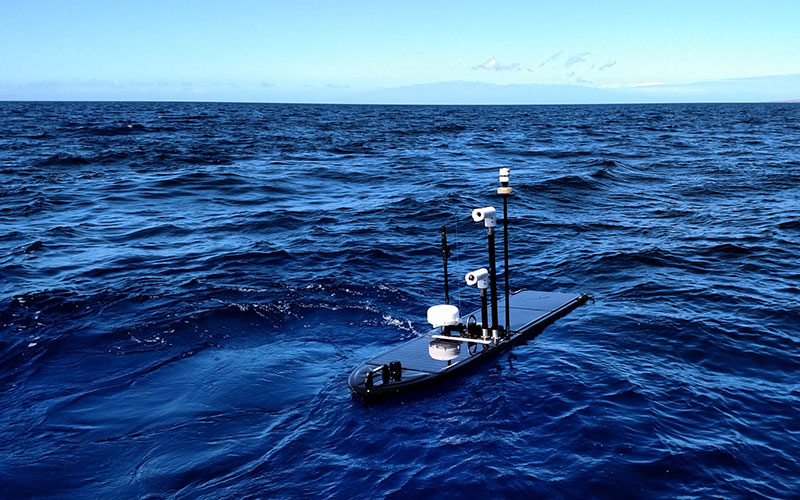High Bandwidth on the Open Seas
Liquid Robotics — March 23, 2017
For those of us who spend most of our time on land, it can be hard to understand how much our lives have changed with the availability of both bandwidth and the internet. If you travel, you think nothing of sending some emails with important documents or images while on a transatlantic airplane flight. Bandwidth on the go lets us get work done faster and maintain important connections. It should come as no surprise that the same productivity gains we experience may also be felt by other systems, like unmanned surface vehicles (and the people who use them).
Liquid Robotics now offers a BGAN satellite communication option for the Wave Glider, an unmanned surface vehicle, that enables persistent and mobile ocean monitoring over long durations. This service allows a Wave Glider to access 100x more satellite bandwidth (464 kbps vs 2.4 kbps) in locations around the world, when compared to traditional approaches such as Iridium RUDICS based communications. This capability opens new doors to how we monitor, manage, and protect the ocean. More specifically, it provides researchers and law enforcement agencies frequent access to rich data about activities and conditions in the ocean. Providing richer snapshots of what’s happening, more frequently over time, helps to identify activity patterns.
Today, we offer the BGAN option for our Maritime Surveillance solution, which detects vessels (typically dark targets — or vessels that do not identify themselves with an AIS signal) using sound gathered from a towed passive acoustic hydrophone. BGAN equipped Wave Gliders can transmit high-definition visual and audio data allowing organizations to more quickly translate data into actionable intelligence. Place 5-10 Wave Gliders with this type of connectivity in an area of interest, and law enforcement gets a new source of data to help them identify dark targets, understand vessel activity, and better direct interdiction assets such as boats and AUVs.
Kudos to our engineering team for their efforts. They designed and integrated both hardware and software, including a Hughes 9450 modem onto the surface float, a custom designed, protective housing (I call it the helmet), power duty cycling to conserve energy, and the ability to transmit acoustic and visual data files through our Mission Management software. Here’s what that looks like out on the water.

Wave Glider with BGAN dome, 2 cameras, and additional sensors.
Observed data transfer rates are as follows:
- 1MB picture transfers in approximately 32 seconds, if the modem is already active, or 2.5 minutes if the modem needs to power-up and acquire a signal.
- 3-minutes of audio data (approximately 4MB) transfers in approximately 4 minutes.
Although initially integrated for our Maritime Surveillance solution, we expect other applications and needs for BGAN communication capabilities by our customers, partners, and developers. Real-time access to high-definition photos, audio, or video provides a valuable new capability that enhances the operations of unmanned systems at scale.
Contact us for more details or check out the BGAN spec sheet on our sensor page.
